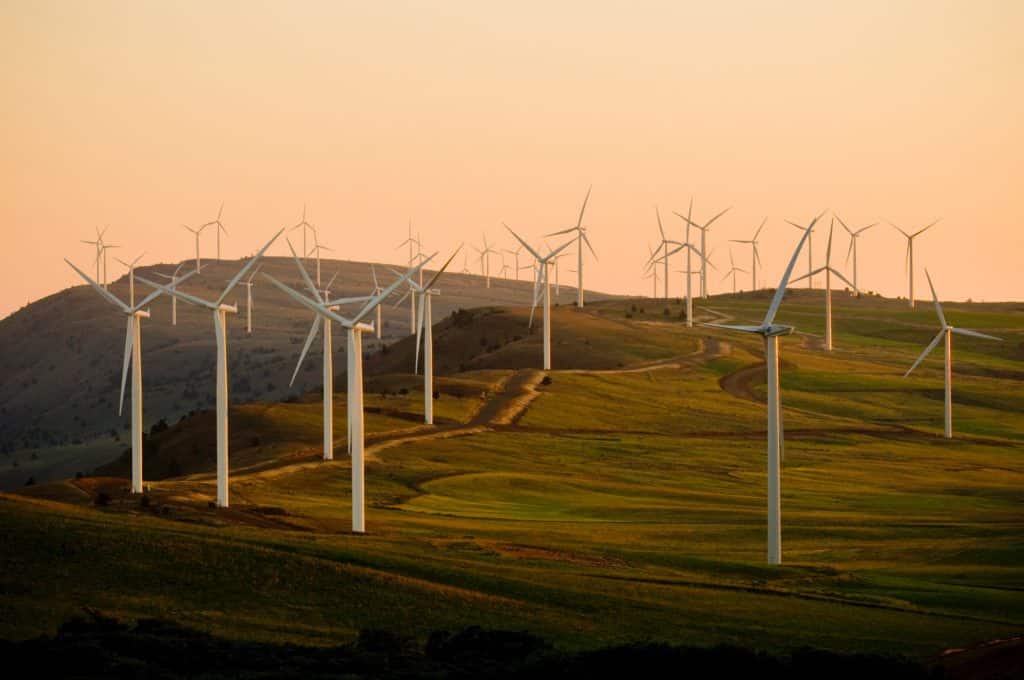Our world has a population of 7.8 billion people, with estimates expecting to reach 8 billion by the year 2023. A world with this many people is consuming vast amounts of resources each day to power our cars, cities, and corporations.
The variety of energy sources we use has increased over the years due to the growing awareness of the risk at hand. These are grouped based on several different factors: if they’re primary, secondary, renewable, non-renewable, or fossil fuels.
Our focus will be looking at the amount of non-renewable energy being used in the world today and exploring more practical and efficient ways to produce sustainable energy in the future.

How much energy do we consume?
Just to put things into perspective: only two years ago, the United States alone consumed 101.3 quadrillions BTU or British thermal units of power. Of this staggering amount of energy, fossil fuels accounted for almost 80 percent of our primary source of energy production.
Humanity has to produce massive amounts of energy to support our energy-consuming needs. We primarily use fossil fuels now. In fact, 96% of the items we use today contain fossil fuels. They get used in ways you wouldn’t even expect; MRI scanners, gasoline for cars, heating oil, and natural gas for electricity, even in the production of deodorant and clothes and shoes.
Right now, 16 of the world’s largest oil drilling reserves in the world have reached their maximum production amount. Crude oil reserves are facing the consequences with a consumption rate of over 4 billion tons a year. Researchers have calculated that at this rate, we would be out in about 53 years. This doesn’t even account for the irreparable harm they will do to our environment through climate change. We will likely see the end of fossil fuel in our lifetime.
What can be done about it?
From solar panels to water-powered machines, renewable sources of energy are popping up everywhere. Whether you’re an environmentalist or not, the world is looking towards clean and safe methods of using renewable sources to provide our ever-growing planet with enough power to last us for a lifetime.
Renewable energy is energy produced from natural sources that can recover and sustain themselves over some time without depleting. Because we aren’t extracting them from nature through mining and drilling, they do little damage.
One of the oldest and most common renewable energy sources is wind power. Thus, we will take a look at the pros and cons of using wind power below.
What are the Pros of Wind Power?
1. Reduces the effects of global warming
Human activity from manufacturing and driving overload the atmosphere with carbon dioxide and other greenhouse gases that promote global warming. These gases act like a weighted blanket, trapping heat underneath, creating a thick impenetrable layer of heat below the surface.
Contrary to societal belief, these effects can be seen in the melting of the polar ice caps and glaciers, destroying the habitats of the animals to depend on the icy environment to survive. Wind power releases no carbon emissions, offsetting greenhouse gases by over 2.5 billion points of carbon dioxide and 15 million pounds of pollution that would have been released into the air.
2. Farmland footprints
Energy suppliers who harness the power of wind can choose to use farmland or the countryside as a means of using it as the building site for wind turbines. Farmers can use the additional income, and turbines take up more air space than land, allowing for basic farm production to remain stable.
3. Reduces the need for fossil fuels
With such dependence on fossil fuels and other non-renewable sources of energy, wind power is an endless supply that costs nothing when compared to other sources. With the amount of which we use it, the government is far more likely to turn to greener methods of energy production.
4. Promotes industry and economic growth
In the United States alone, the wind industry employed over 100,000 workers in 2016. People estimate that wind power can create over 600,000 new jobs to manufacture, install, maintain, and support by the year 2050. With wind-powered countries and communities in Europe, there is stimulated competition for a clean energy economy.
What are the Cons of Wind Power?
1. Concerns for wildlife
While wind is undeniably not harmful to the environment, how we harness its power can have an effect on wildlife. The massive rotor blades from which wind turbines spin, have been reported to hit our avian populations like birds and bats. Fortunately, improvements have been made to situate wind-powered plants in areas where they are less common.
2. Complications with harnessing and transporting
Wind turbines are most effective when faced with heavy blowing winds. There is no tangible way to harness and store wind power from turbines, making it less efficient for energy production when there is little to no wind being produced. Higher energy using societies would struggle to be windpower dependent as the intermittency of wind results in lower energy production.
3. Cost effects of wind energy
Wind power plants require well over one turbine per area to generate the power needed. Turbines are spaced depending on the direction in which the wind comes from. The further apart the rotors are from each other, the more land being taken up. Turbines are rather costly to create, install power lines, and replacing old turbines is done without subsidies
- Tulip Mania – The Story of One of History’s Worst Financial Bubbles - May 15, 2022
- The True Story of Rapunzel - February 22, 2022
- The Blue Fugates: A Kentucky Family Born with Blue Skin - August 17, 2021